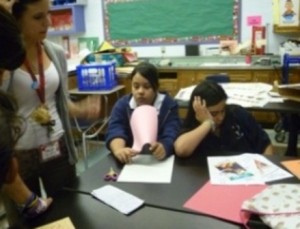The Difference between Controlling and Managing a Classroom
Sara Hall is a First Year Teaching Fellow at Eastway Middle School in Charlotte, NC
This is a battle I wasn’t even aware was being waged in my classroom. The worst part is that I was waging war on myself. Let me paint you a picture:
It's homework time. I have 20+ students in various stages of getting out their homework. I’ve spent the last few weeks trying to reinforce procedures that I am just positive will help ensure homework time runs smoothly. So, you can imagine my surprise when I only see about 5 students doing what I ask. And the rest of the class, well:
- Two or Three students are out of their seats
- Most of the class is talking
- A paper ball flies across the classroom
- I literally have a student lying on the floor
- Why aren’t these kids just following the procedures I have in place?
- It shouldn’t take this long for everyone to get settled.
- How can I help students on homework, if I have to monitor when and if someone can get a pencil or throws away trash?
I wish I could say the answers came to me immediately. However, it took two entire weeks of homework time just like this. Then, it hit me. I am not managing my classroom. I am micro-managing.
I had procedures in place. However, I wasn’t giving my students the freedom to manage themselves. Instead of letting them walk across the room to get paper if they needed it, I was making them wait until I gave them permission. Well, when a student doesn’t have the necessary material to complete an assignment, then their focus will naturally turn elsewhere. Instead of working diligently, they are now distracting their neighbor, reading a magazine, playing on their phone, etc.
The short answer: I needed a concrete idea in my head about what it should look like when students are successful. I quickly realized that the more effort I spent managing (reinforcing) procedures instead of controlling (micro – managing) student actions, the less time I spent getting students back on task.
What advice do you have for first year teachers?



